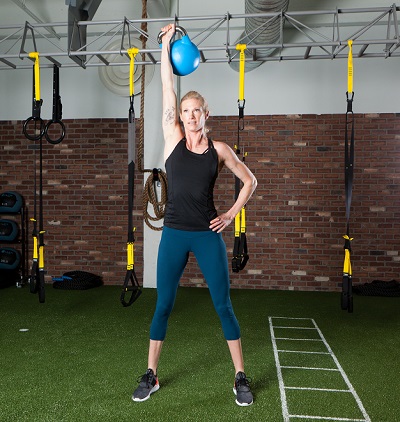By Christian Garcia, CSCS
Behind on your fitness goals? Try incorporating these training styles into your workout to increase muscular endurance.
Here is what you can do: HITT Training
- AMRAP
-
-
-
- As Many Rounds as Possible (AMRAP) lives on the basis of time, its you against the clock, working to complete as many rounds or reps of exercises as possible. This means you’ll be performing several exercises back to back with as little rest as possible between exercises. You will have to pre-determine the number of reps for each exercise you decide to incorporate
- For instance, if you include a squat, pushups, single leg deadlift and plank ups, you might perform 20 squats, 15 pushups, 10 single leg deads per leg, and 5 plank ups. Then rinse and repeat as many times as possible within the total time allotted.
- Form is more important than speed, the idea is to feel the muscles you are targeting in order get the full effect, You won’t be able to continue towards the summer shred at full strength while being injured. Your body is going to get tired. If you compromise your form when you are tired, that is when injuries are most likely to occur.
- Rest as needed, you’re in complete control of determining when your body needs to rest. Keep any rest as short as possible so you can continue the workout and reap the rewards.
- Keep exercises simple, if you decide to use more complex exercises or plyometric movements, pay attention to form and slow your pace when needed.
- Record results, you are competing against yourself. There is no way to figure out if you got better the following week if no record was written down!
- As Many Rounds as Possible (AMRAP) lives on the basis of time, its you against the clock, working to complete as many rounds or reps of exercises as possible. This means you’ll be performing several exercises back to back with as little rest as possible between exercises. You will have to pre-determine the number of reps for each exercise you decide to incorporate
-
-
- EMOM
-
-
-
- Every Minute on the Minute, where you perform a specific task at the start of every minute for a set amount of time.
- Pacing; the clock decides when you’ll be working and when you’ll be resting. For instance, for clients who are beginners I usually like ending training sessions every other week with 8-10 minutes of 10-15 bodyweight pushups and or squats. If it takes you 20 seconds the first minute and 50 seconds the second minute, you can clearly see you have fallen off pace.
- Progression; EMOMs are a great tool for measuring progressions from week to week.
- Versatility; EMOMs can be incorporated to train anything (power, aerobic & anaerobic systems, mechanics and or skills.
- Record results, you are competing against yourself. No way to figure out with you got better the following week if no record was written down!
-
-
- Team Conditioning at Flow Fitness
-
-
- Increase your conditioning and muscular endurance using multi-joint and multi-plane functional movements in Team Conditioning at Flow Fitness.
- The classes are instructed by trainers, who will lead and push you through timed blocks that incorporate TRX, Medicine Balls,Kettlebells, Dumbbells, Ropes, Sandbags, and our high intensity training equipment.
- The timed blocks are set as intervals such as 30’’/30’’ for 6 rounds or 45’’/45’’ for 4 rounds, in which challenge you to keep up with the clock while performing quality repetitions of a Squat, Push, Pull, and Hinging exercise.
- Come try a Team Conditioning class at either location (SLU&FRE). Early morning, lunchtime and evening classes available!
-


